October is a Special “Bee Anniversary” Bees have been in the news the last few years due to declining populations likely caused by habitat loss, climate change, pesticides, and monocrop agriculture. Fewer bees and other pollinators endanger not only world commerce, but also world ecosystems. If your goal is to help your students bee informed about history, economics or science, give them a tutorial on bees and use this post to help! How Do Scientists Classify Bees?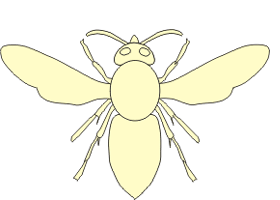 There are nearly 20,000 known bee species which differ widely in physical characteristics, pollination habits, behaviors, and habitat. In terms of taxonomic classification, bees are in the Animal (Animalia) Kingdom because they are eukaryotic, multicellular, motile organisms, with specialized sensory organs. They are in the Arthropod (Arthropoda) Phylum because they are invertebrates with an exoskeleton, a segmented body, and paired jointed appendages. They have six legs and one or two pairs of wings, which makes them part of the Insect (Insecta) Class. 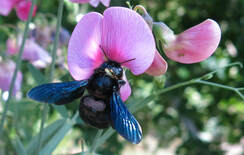 Bees are of the Order Hymenoptera meaning "membrane-winged", which includes ants and wasps. There are several bee Families; the largest Bee Family is Apidea, which includes common bees such as bumblebees and honeybees. Bombus impatiens: The Busiest Bee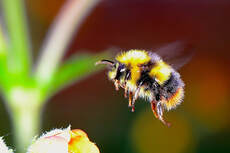 Bumblebees are in the Bombus Genus. They are round and fuzzy, lacking a clear distinction between their head, thorax, and abdomen. Bumblebees have two sets of wings; the rear wings are small and usually attached to the forewings. Bumblebees are somewhat social, living in nests with up to a few hundred fellow bees. Whatever honey they produce is just enough for their own consumption. 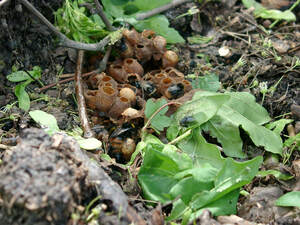 Humans have had only limited success with bumblebee domestication. Bumblebee nests are most commonly found in the wild: in soil beneath rocks, in abandoned bird’s nests, or in the cavities of trees. In the early spring, a queen comes out of dormancy and finds a suitable place to create her colony. She builds wax cells in which to lay her eggs which were fertilized the previous year. She grows her colony, first with female workers (who help with feeding the developing young and foraging), and later with male drones and new queens. The males leave the nest and spend their time feeding on nectar and trying to mate. 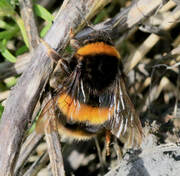 By late summer, the new queens leave the nest, feed heavily on pollen and nectar, mate, then hibernate, and re-emerge the following year to establish new colonies of their own. The old queen and her nest will naturally come to an end as summer turns into autumn. Only the new queens survive until the following spring by hibernating underground. 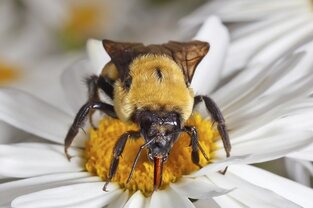 There are 250 species of bumblebees with a variety of tongue lengths, which enables them to feed from a multitude of flower types. They are fast workers with large bodies which can carry big pollen loads. They have hefty pollen baskets on their hind legs, which facilitate this. Pollen also clings to their hairy abdomens and is deposited during successive visits to different blossoms. Bumblebees are adept at cross-pollination and are resistant to weather conditions such as cold, rain, and limited light. All these factors make bumblebees superior pollinators. 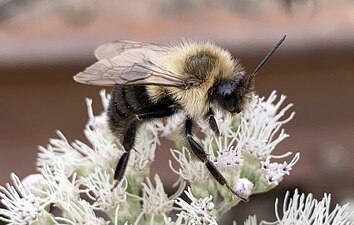 The Common Eastern Bumblebee (Bombus impatiens) is one of the best native pollinators of flowers and fruit and vegetable crops, including tomatoes, blueberries, strawberries, cherries, and cucumbers. B. impatiens has black hairs on its head, abdomen, and legs. It has a yellow thorax between the first two sets of its legs. In general, queens and workers are similar in their coloring and body structure. Queens, however, have a body length of 17–23 mm, bigger than both males and workers. B. impatiens males differ slightly in their coloring, having a yellow head. Use this bumblebee activity to teach your class about these busy pollinators. European Honeybee 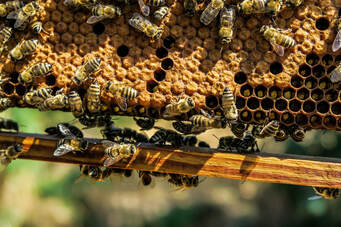 Like bumblebees, honeybees also belong to the Apidae Family. Honeybees, however, are of the Apis Genus, indicating that construct nests from wax and store a surplus of honey. They are smaller and thinner than bumblebees. Honeybees are more anatomically typical of all insects. Their bodies have clear distinctions between their head, thorax, and abdomen. Honeybees also have two sets of wings: one in the front and a smaller set in back. 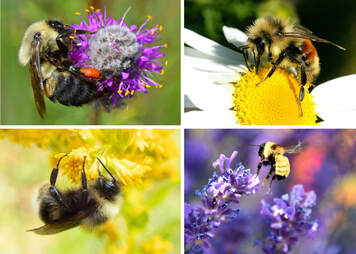 Native bees, including bumblebees, were in the Americas long before European Honeybees. (There are about 4,000 bee species native to the US). Native bees are better and more efficient pollinators of many crops. About 20%-45% of native bees are specialists, using only pollen from one species (or genus) of plants. Both the specific plant and type of bee are interdependent; one can’t exist without the other. Usually, these bees' hatching schedule coincides with when their host flowers are in bloom. 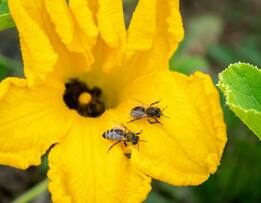 Crops that they pollinate include squash, pumpkins, zucchini, tomatoes, cherries, blueberries, and cranberries. Not only do they pollinate plants important as food crops, but they also pollinate plants necessary to wildlife. Even crops that don’t require pollination like cotton, soybeans, and peppers, have a higher yield if they are visited by bees. Bees help to feed the world. 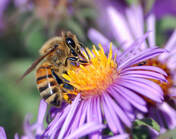 European Honeybee (EHB) colonies were brought by settlers to New England in the 1600's. EHBs are generalists; They will gather pollen and nectar from any plant in bloom. (This is the reason honey comes in so many different flavors). In the process of visiting blossoms, honeybees pollinate cultivated crops such as cucumbers, watermelons, apples, almonds, lemons, and cantaloupes. 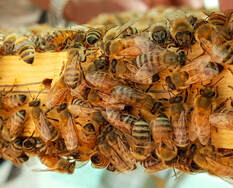 Honeybees are hyper-social. They live either in domesticated beehives or in wild hives with tens of thousands of their brethren. As their name suggests, they are honey producers. They do this as a way of storing food to eat over winter, when they are unable to forage. Honeybee hives can last indefinitely if conditions are right for them to grow in the spring and summer and hibernate in the winter, intact. 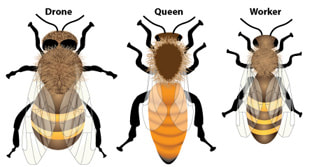 A honeybee colony typically consists of three kinds of adult bees: workers, drones, and a queen. They cooperate in nest building, food collection, and brood rearing. The social structure depends on an effective system of communication through the distribution of chemical pheromones among members and communicative “dances” which are responsible for controlling the activities necessary for colony survival. 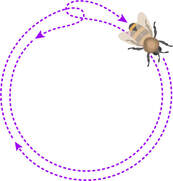 Honeybee “dances” are performed to let fellow workers know where good supplies of pollen can be found. Although this is good for the colony and honey production, it can be a disadvantage in terms of pollination. Honeybees rush off to mine a certain pollen source, whereas bumblebees stay around, patiently working an area until it is fully pollinated. In Pursuit of Honey EHBs exist on every continent except Antarctica. They prosper in temperate conditions, but don’t do as well in the tropics. In contrast, African Honeybees are abundant and thrive in the tropics.  This was the reason that, in 1956, Brazilian entomologists crossed EHBs (Apis mellifera ligustica and A. m. iberiensis) with East African Lowland Honeybees (A. m. scutellata), creating a hybrid Africanized Honeybee (AHB). The scientists were trying to create a strain of bee which would produce more honey in tropical conditions to supply Brazil’s growing honey industry 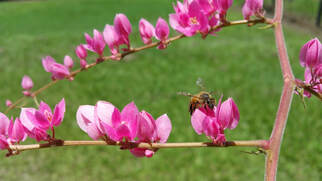 The entomologists noted that their hybrid AHBs were especially defensive and swarmed more often, earning them the name “killer bees”. As a precaution, the hives were outfitted with special screens to prevent the hybrids from escaping. However, in 1957 a visiting beekeeper accidentally released several swarms. Following the release, the AHB swarms spread out and crossbred with local EHB colonies. 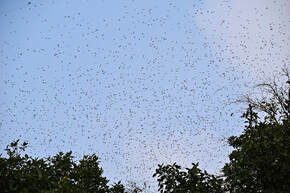 The descendants of these colonies have since traveled throughout the Americas, moving through the Amazon Basin in the 1970s, crossing into Central America in 1982, and reaching Mexico in 1985. They are an invasive species which moves rapidly. 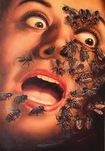 The prospect of “killer bees” arriving in the United States caused a media sensation in the late 1970s and sparked debate about the wisdom of humans altering ecosystems. Sensationalized movies entitled "The Swarm", "The Savage Bees" and "The Killer Bees" were produced which created inaccurate perceptions of Africanized Bees. (Here is your opportunity to discuss the intersection of science, news media, and entertainment with your class).  The first known AHBs to enter the U.S. from Mexico occurred in the Rio Grande River Valley near Hidalgo, Texas on October 15, 1990. The AHBs have spread mostly westward in the U.S. and today can be found in mainly in Arizona, California, Nevada, New Mexico, and Texas. In 1994 15% of swarms in Tuscan, Arizona were Africanized; by 1997 the number had grown to 90%. Africanized “Killer” Honeybees?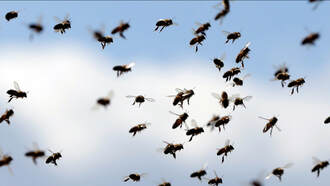 AHB colonies have one forth the number of bees as EHB colonies. This smaller size enables AHBs to be nimbler when their colony is threatened. AHBs swarm 6 to 12 times a year, compared to a single seasonal swarm typical among EHB colonies. 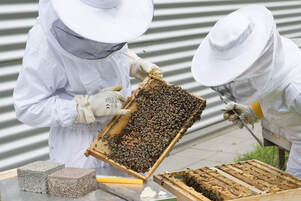 Entomologists believe that the African subspecies developed their aggressive nature through natural selection. AHBs evolved in a tropical climate with frequent droughts and unpredictable weather. They also dealt with a wide array of predators including humans. Conversely, EHBs developed in a colder climate having four seasons, abundant water, and dependable forage. In addition, EHBs have been selectively bred for a calmer attitude 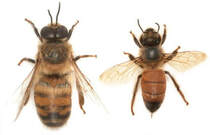 Both European and African Honeybees are known for their yellowish color and characteristic black stripes along their abdomens. AHBs are slightly smaller than EHBs, but visually, it is nearly impossible to tell the difference between AHBs and EHBs. 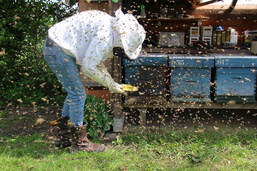 Behaviorally, however, they are quite different. When provoked, EHBs may send out 10-20 protection bees; AHBs will send out over 300 bees to defend the colony. In addition to sending out more bees for protection, AHBs will also chase a victim a longer distance from the hive. AHBs also remain agitated for a longer time after a disturbance. Depending on the situation, AHBs may swarm to find a new home  The term “killer bee” gives the impression that AHBs are simply out to kill. In fact, they are defending their hive. AHBs respond to colony disturbance more quickly, in greater numbers, and with more stinging than do EHB. In some cases, the noise or vibration of tractors or motorboats has provoked the bees to sting. However, chance encounters with individual AHBs on blossoms pose no greater threat then encounters with EHBs. Use this honeybee activity to teach your class about honey production, invasive species, or artificial selection. The Sting of Honeybees vs Bumblebees AHBs are slightly smaller than EHBs, so they carry less venom. The venom from one AHB sting is no more potent than the venom of a single EHB sting. So, bee for bee, the “killer bee” is the lesser threat. In the absence of an allergic reaction, it would take around 1000 bee stings to deliver a lethal dose of toxin to an average-sized adult. EHBs are rarely this combative, but AHBs can be. 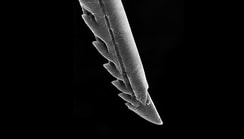 Worker honeybees are all infertile females. They are disposable soldiers for the colony: their sole function is to gather nectar, pollinate, and defend the base. The honeybee’s stinger is structured in such a way that once it punctures its target, the bee must disembowel itself to disengage from its victim. 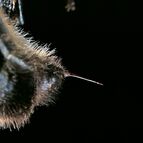 Bumblebees can sting multiple times because their stylus has no barbs. Unlike honeybees, they do not form swarms. In general, bumblebees are peaceful insects and will only sting when they feel cornered or when their hive is disturbed. 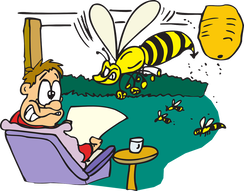 The first reaction many people have when they see a bee is fear. It's painful to get stung, and some people have allergic reactions to the sting. But the next time you see a bee, remember that although they sting, bees are some of the most beneficial animals in nature. They make our lives better. The best defense for avoiding stings from any insects - not just bees - is common sense. If you find yourself near large numbers of bees, calmly and quickly move away from the area. Africanized Honeybees Naturally Resistant 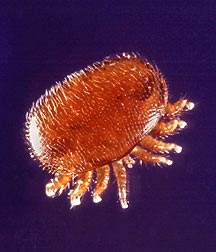 The Varroa mite is an external parasite that feeds off adult and developing honeybees, weakening and killing the bees that they feed on. Weakened honeybees may be more susceptible to pathogens and harmful effects from pesticide use. AHBs may have a superior innate resistance to EHB, which enables them to sustain their colonies in the face of threats from pathogens, pests like Varroa mites, and pesticides. 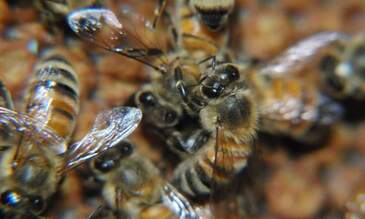 According to researchers, one aspect of the AHB’s resistance is grooming behavior. AHBs in Brazil were more efficient at removing Varroa than EHBs. A study found that AHB workers removed infestations through their grooming actions. Other researchers in Mexico found that AHBs had superior hygienic behavior compared to EHBs. Additionally, the shorter development time of pupating AHBs also seemed to limit the reproduction of mites. Researchers expect that these factors reduce the reproductive potential of female Varroa mites on AHBs relative to EHBs. 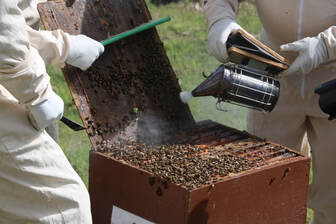 Because of this better resistance, some beekeepers have embraced the AHB through modifications to their management practices. Since colony collapse disorder is decimating many EHB colonies, beekeepers and honey producers are seeing tropical honeybees as a blessing because they can flourish. The countries that are making the switch are among the top honey producers in the world.
0 Comments
|
AuthorGertrude Katz has spent over 30 years teaching K-12 public school students all major subjects. She has taught biology and education at the college level. The majority of her career has been spent instructing biology at the secondary level. Categories
All
|
 RSS Feed
RSS Feed